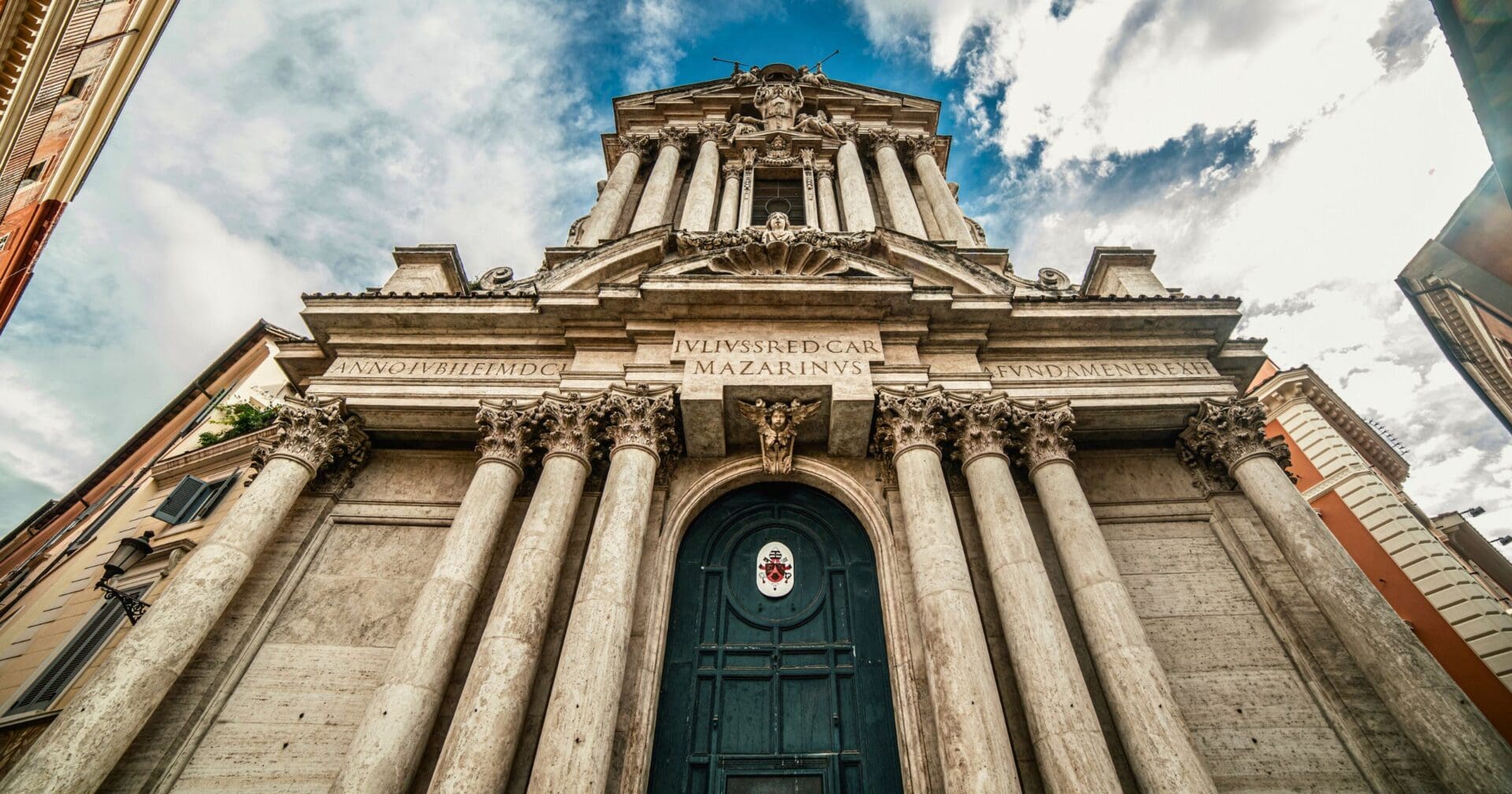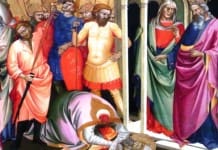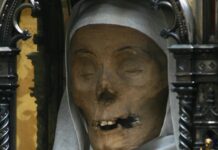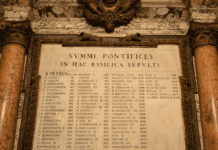As Catholics, we venerate the relics of saints and martyrs to show proper reverence for the pious and holy lives they led in service of God. The Catholic tradition of venerating the relics of saints and martyrs is one of the oldest within the Church, stretching back at least as early as the year 156 AD with the recorded veneration of the relics of Saint Polycarp.
However, most people aren’t aware of the little-known centuries old tradition of preserving the hearts of deceased popes, and that one church has over twenty hearts of the pontiffs of years past.
“So extraordinary were the mighty deeds God accomplished at the hands of Paul that when face cloths or aprons that touched his skin were applied to the sick, their diseases left them and the evil spirits came out of them” – Acts 19:11-12
The Baroque-styled church of Saints Vincent and Anastasius at Trevi in Rome stands opposite the famous Trevi Fountain. Inside, a churchgoer would find the embalmed hearts of 22 popes, starting with Pope Sixtus V from 1583 to Pope Leo XIII from 1903. To the left of the altar is a full list containing the names of all 22 popes with their relics within the church.
The tradition started in the 14th century when it was established that the body of a deceased pope would be mourned for 9 days, with suffrage masses being said each day. The practice was borrowed from the mourning ceremonies of Byzantine emperors. Because of the long interval between death and burial, a form of embalming was needed. The inner organs of the body were removed to prevent deterioration and then distributed as relics. The church of Saints Vincent and Anastasius at Trevi was chosen as the destination for the hearts.
However, the practice ended with the passing of Pope Pius X in 1914, who expressly forbade it in his burial and will. His papal successors have supported his decision and have done the same since. In 2002, Pope Saint John Paul II gifted the use of the church to the Bulgarian Orthodox Church, however the 22 papal hearts remain there to this day.
Photo credit: Lambros Kazan / Shutterstock.com


















[…] uCatholic […]